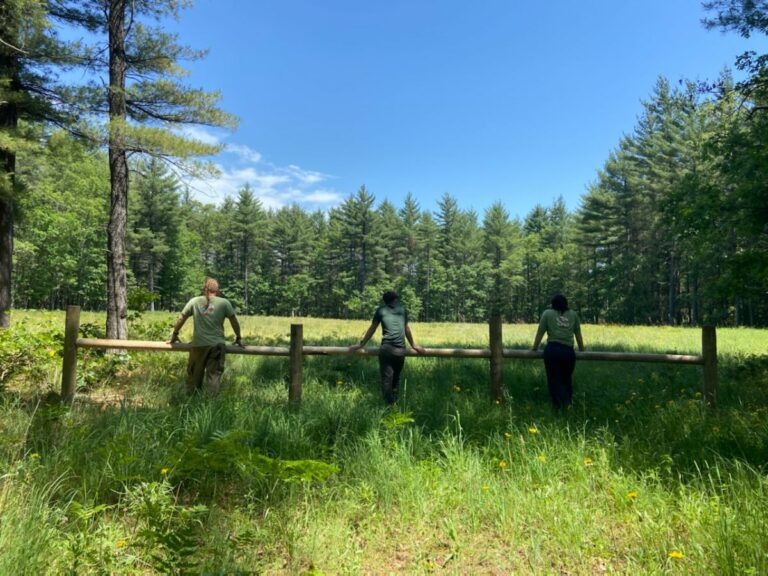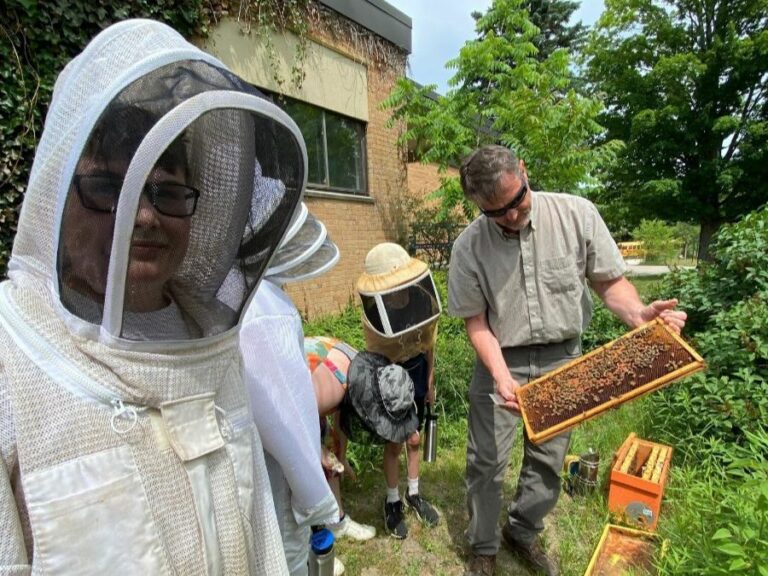Acting Natural: How the Sidewalk Ends
Posted by SEEDS on Jun 12 , 2019 – 05:37 am
By Will Nichols, SEEDS Volunteer
Biomimicist by profession, physicist by training, nerdy by nature, Will is passionate about how systems are designed and how systems work. The theme of Acting Natural is to highlight ways nature can help us design our communities, our businesses and our individual lives to be healthier and happier.
While walking recently, I noticed blades of grass pressing their way through cracks in the sidewalk and I was struck by a paradox. On one hand, sidewalks are connectors bringing us closer to nature. On the other hand, sidewalks are a part of an enormous network of impenetrable surfaces of concrete, brick and asphalt separating us from nature. The paved surfaces themselves aren’t the problem, it’s the vast extent these surfaces have grown across the landscape. Despite appearing to be a very “human” problem, this is actually the most natural problem of all. Nature is always striving to extend her reach, growth is a fundamental force. However, the opposite force of reabsorption is just as fundamental. Here we are witnessing Newton’s third law writ large, every action has an equal and opposite reaction. Nature is the continuous, rhythmic dance of growth and reabsorption.
On subsequent walks around Traverse City, I began to notice everywhere this curious waltz between grass and concrete. Grass is a pioneer species, adaptable, rugged, tenacious. Seeds from nearby grass are blown by the wind into tiny cracks in the concrete providing safe harbor for growth. In the cracks the seeds wait patiently, nature has time; there is a tempo to nature’s balance. When the time is right, water launches the journey. Germination begins with water activating dormant enzymes that utilize stored nutrients. Feeding off the nutrients, cells divide – two becomes four becomes eight – both multiplying and specializing. Sprouting out into the air, the newly specialized root cells hear the call of gravity, while cells of the green blade grow upward in defiance. A roadway or sidewalk might seem like a hostile environment, but these surfaces are primarily aggregate rock, a comforting home to a species that turns solid, kraggy, stone mountains verdant green. Potential energy in the growing root tip, like a coiled spring, forces its way further into the crack to anchor itself and collect water and nutrients. The small, but unrelenting pressure expands microcracks exposing more surface and breaking off tiny pieces of the rock. With the help of water and nature’s chemical factories, fungi and bacteria, asphalt and concrete are broken down from which, minerals like calcium and silicon, are pulled from the rock into the growing grass. Molecule by molecule, a parking lot becomes a prairie, a participant in the cycles of life once again.
“God bless the grass that breaks through cement
It’s green and it’s tender and it’s easily bent
But after awhile it lifts up its head
For the grass is living and the stone is dead
– Pete Seeger
In our human built environment we’ve pulled so many materials out of their natural cycles, and in doing so we’ve made them dead. It’s time we master the balancing force of reabsorption and bring materials back into living cycles. We are the grass seeds and despite the oppressive extent of our pollution, there are plenty of cracks we can open – the Project Drawdown site provides 100 great actions to launch the process. Small actions are accumulative, the first seed creates a little space, making it easier for the next seed and soon there are 10 blades of grass pulling nutrients back into life’s cycle, then 100, then 1000. Who among us will take up the challenge and be the pioneer seeds?



